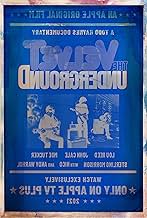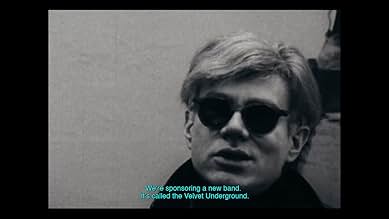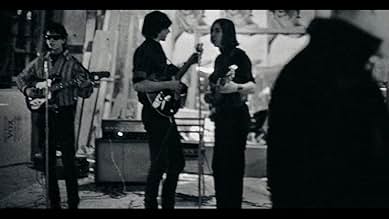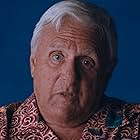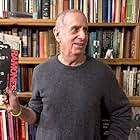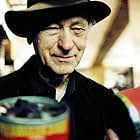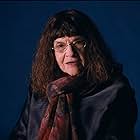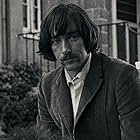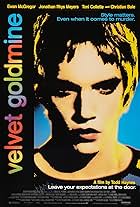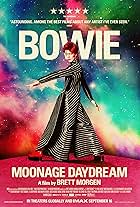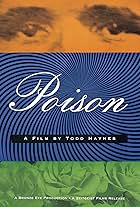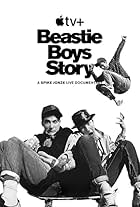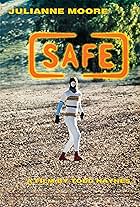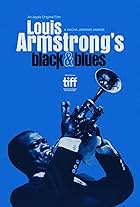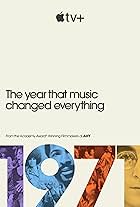IMDb RATING
7.3/10
5.6K
YOUR RATING
The Velvet Underground explores the multiple threads that converged to bring together one of the most influential bands in rock and roll.The Velvet Underground explores the multiple threads that converged to bring together one of the most influential bands in rock and roll.The Velvet Underground explores the multiple threads that converged to bring together one of the most influential bands in rock and roll.
- Awards
- 3 wins & 36 nominations
The Velvet Underground
- Themselves
- (archive footage)
Lou Reed
- Self - Songwriter, Musician & Author
- (archive footage)
Sterling Morrison
- Self - Musician
- (archive footage)
- Director
- Writer
- All cast & crew
- Production, box office & more at IMDbPro
Storyline
Did you know
- TriviaAfter Lou Reed and Sterling Morrison quit the band, it carried on for a time with Doug Yule becoming the frontman on vocals and guitar. Moe Tucker also stayed with the band after her return from parental leave and they were joined by a new bassist and keyboardist. This lineup toured the Loaded album around parts of North America and Europe in 1971. A fifth studio album was released for a UK record label under the Velvet Underground name: 1973's Squeeze. All members bar Doug Yule were sent back to the United States in 1972 and Yule recorded all parts except the drums by Deep Purple's Ian Paice, saxophone by someone called Malcolm and some unidentified female backing vocals. Recording the album as essentially a Doug Yule solo effort was at the instruction of manager Steve Seswick, who had earlier brought Yule to the band and had long pushed for the Velvets to adopt a more commercial style with Yule at its centre. Yule himself was displeased at Seswick's control of the process. While Yule had been a significant creative force, albeit secondary to Lou Reed, on the celebrated Loaded album, Squeeze is much-maligned. It received terrible reviews, though it has gained some appreciators over the years. It is typically considered a Velvets record in name only. At around the same time as the official Velvet Underground were being reduced to Seswick's Doug Yule project, Lou Reed, John Cale and Nico had also been in Europe for a reunion performance in Paris in 1972, which was bootlegged and eventually released under the name Le Bataclan '72. Footage from this reunion performance is included in this film.
- Quotes
Self - Songwriter, Musician & Producer: We tuned to the sixty-cycle hum of the refrigerator. The sixty-cycle hum of the refrigerator was to us the drone of Western civilization.
- ConnectionsFeatures Pierrette I (1924)
Featured review
(Jonathan Richman on Velvet Underground): "For me, it was like being in the presence of Michelangelo!"
Now, let's not get too crazy here - Michelangelo never created anything as rad as "I'm Waiting for the Man" :p
This is the kind of documentary you can sink into, that moves from one part to the next seamlessly. And it made me realize that how they created those first songs and that first album is even more miraculous than I had thought before. It's like a really clear and inspirational look - and inspiration that comes from depicting life in an honesty and sadness that came from personal spots - also at how this group managed to synthesize art into many forms... because it wasn't "with it" (oh how they go after the hippies here, or at least Woronov who is a great interview). Real art actually pushes past what came before while embracing so many other kinds of art (from the most avant garde to the Everly Brothers in pop), and Haynes's doc does a superb job of revealing that.
Haynes did a q&a after the screening I went to (oh I'm so glad I got to see the title on a big screen if nothing else, but those Warhol Screen Tests really are more interesting in a theatrical setting, though it helps that there's split screen to juxtapose and so on that's so great, I digress but the editing is some of the most invigorating in a doc in years) - he called this kind of a Dreamscape of the 60s and New York, and it's a dream that vacillates in the joy and thrill of creating something new and the edge and uncanny and dark that comes with that. And the fact that the footage of the Underground largely rests in the Factory world makes it a story of that, too... up to a point.
But at the heart of it and what drives it to being so absorbing is Lou Reed. There's a mystery and sadness to him that the film can only scratch the surface to see, not because it doesn't mean to try but because it would be too disrespectful to try to make hypothetical things. He's just... Lou.
And lastly... I still don't get Warhol, either. Frankly, maybe I've just never been cool or hip enough for it. Vinyl (1965) is not bad, though. And I'm glad there was mention of (the Factory) being not all peaches and cream, especially for the women.
Now, let's not get too crazy here - Michelangelo never created anything as rad as "I'm Waiting for the Man" :p
This is the kind of documentary you can sink into, that moves from one part to the next seamlessly. And it made me realize that how they created those first songs and that first album is even more miraculous than I had thought before. It's like a really clear and inspirational look - and inspiration that comes from depicting life in an honesty and sadness that came from personal spots - also at how this group managed to synthesize art into many forms... because it wasn't "with it" (oh how they go after the hippies here, or at least Woronov who is a great interview). Real art actually pushes past what came before while embracing so many other kinds of art (from the most avant garde to the Everly Brothers in pop), and Haynes's doc does a superb job of revealing that.
Haynes did a q&a after the screening I went to (oh I'm so glad I got to see the title on a big screen if nothing else, but those Warhol Screen Tests really are more interesting in a theatrical setting, though it helps that there's split screen to juxtapose and so on that's so great, I digress but the editing is some of the most invigorating in a doc in years) - he called this kind of a Dreamscape of the 60s and New York, and it's a dream that vacillates in the joy and thrill of creating something new and the edge and uncanny and dark that comes with that. And the fact that the footage of the Underground largely rests in the Factory world makes it a story of that, too... up to a point.
But at the heart of it and what drives it to being so absorbing is Lou Reed. There's a mystery and sadness to him that the film can only scratch the surface to see, not because it doesn't mean to try but because it would be too disrespectful to try to make hypothetical things. He's just... Lou.
And lastly... I still don't get Warhol, either. Frankly, maybe I've just never been cool or hip enough for it. Vinyl (1965) is not bad, though. And I'm glad there was mention of (the Factory) being not all peaches and cream, especially for the women.
- Quinoa1984
- Oct 21, 2021
- Permalink
- How long is The Velvet Underground?Powered by Alexa
Details
- Release date
- Country of origin
- Language
- Also known as
- Ban nhạc the Velvet Underground
- Filming locations
- New York City, New York, USA(main location)
- Production companies
- See more company credits at IMDbPro
- Runtime2 hours 1 minute
- Color
- Aspect ratio
- 1.78 : 1
Contribute to this page
Suggest an edit or add missing content

Top Gap
By what name was The Velvet Underground (2021) officially released in Japan in Japanese?
Answer




